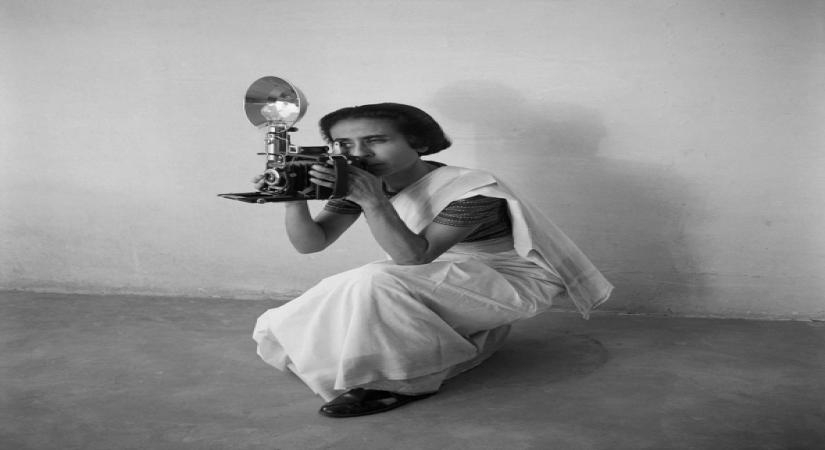New Delhi, July 17 (IANSlife) Homai Vyarawalla (1913-2012) commonly known by her pseudonym ‘Dalda 13’ and India’s first woman press photographer among 120 trailblazing photographers from over 20 countries to be featured at The Metropolitan Museum of Art in New York.
The ongoing exhibition titled “The New Woman Behind the Camera” runs till October 2021. Vyarawalla began work in the late 1930s and retired in the early 1970s. In 2011, she was awarded the Padma Vibhushan, the second highest civilian award of the Republic of India. Some of her photographs on display include one of the Victoria Terminus, Mumbai; ashes of the Mahatma Gandhi being carried and Students at the Sir JJ School of Arts. There is also a photograph of Homai Vyarawalla photographing Ganesh Chaturthi at Chowpatty Beach, Mumbai. In 2010, the Alkazi Collection of Photography acquired the poignant photographic archives of Homai Vyarawalla.
‘The New Woman Behind the Camera’ features 185 photographs, photo books, and illustrated magazines by diverse photographers and highlights the work of the diverse “new” women who made significant advances in modern photography from the 1920s to the 1950s.
According to The Met, during this tumultuous period shaped by two world wars, women stood at the forefront of experimentation with the camera and produced invaluable visual testimony that reflects both their personal experiences and the extraordinary social and political transformations of the era.
The exhibit examines women’s pioneering work in a number of genres, from avant-garde experimentation and commercial studio practice to social documentary, photojournalism, ethnography, and sports, dance, and fashion photography. It highlights the work of photographers such as Ilse Bing, Lola elvarez Bravo, Claude Cahun, Florestine Perrault Collins, Elizaveta Ignatovich, Dorothea Lange, Lee Miller, Niu Weiyu, Tsuneko Sasamoto, Gerda Taro, and Homai Vyarawalla, among many others.
For many of the daring women of the 1920s — a symbol of a woman with bobbed hair, stylish dress, and a confident stride broke down conventional ideas of gender — the camera was a means to assert their self-determination and artistic expression.
For many women, commercial studios were an important entry point into the field of photography, allowing them to forge professional careers and earn their own income. The availability of smaller, lightweight cameras spurred a number of women photographers to explore the city and the diversity of urban experience outside the studio. During this period, many women traveled extensively for the first time and took photographs documenting their experiences abroad. The unprecedented demand for fashion and advertising pictures between the world wars provided new employment opportunities for many female photographers.
Finally, the rise of the picture press also established photojournalism and social documentary photography as dominant forms of visual expression. Galvanized by the effects of a global economic crisis and growing political unrest, many women photographers created powerful images that exposed injustice and swayed public opinion.
As per Max Hollein, Marina Kellen French Director of The Met, “The international scope of this project is unprecedented. Though the New Woman is often regarded as a Western phenomenon, this exhibition proves otherwise by bringing together rarely seen photographs from around the world and presenting a nuanced, global history of photography. The women featured are responsible for shifting the direction of modern photography, and it is exhilarating to witness the accomplishments of these extraordinary practitioners.”





